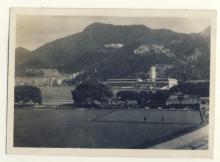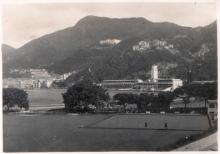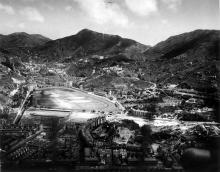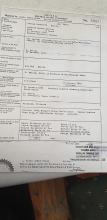St Albert's Priory / Rosary Hill [1935-1962]
Primary tabs
Their dream became a reality in 1935, when St. Albert's Priory, the Dominican House of Studies for the whole Far East, was built at the foot of Mount Nicolson, a place since then known throughout the Colony by the enchanting name ROSARYHILL.
The new monastery was a massive building standing conspicuously on the slope of a hill above Happy Valley and was visible from all parts of the harbour and Kowloon. It was for a long time one of the great Catholic landmarks of the island. It served as the training center of missionaries coming from near and far: Chinese (both local and from the Mainland as well as from Taiwan), Portuguese (of Hong Kong and Macau), Malaysians, Ceylonese, Japanese, Koreans, Vietnamese, Filipinos, Spaniards and Germans. During its twenty-four years of existence (1935-1959), the Rosaryhill House of Studies had produced four bishops and sent forth countless priests and brothers to the various parts of the Lord's vineyard...
Many old time residents of the Colony will still recall the tragic years of the second world war, during which Rosaryhill opened its doors to receive the dependants of prisoners of war under the International Red Cross, civil internees, dependants of the British Red Cross and distressed persons under the care of the Medical Department of the H.K. Government. Even after the war, following the Communists takeover of Mainland China, a great number of bishops (including His Eminence Cardinal Tien of Peking), priests, religious and seminarians sought refuge under the protecting roof of the massive monastery on Rosaryhill.
In more peaceful times, some faithful used to come to pray at the shrine of our Lady of Fatima, erected on the graceful lawn beside the friary. Some others sought the inspiring tranquility of Rosaryhill for annual retreats.
But, alas, peace did not last. The chaos in the East, brought about by the Communists control of China, made it impossible for St. Albert's priory to continue carrying out its task as a center of religious formation. As a result, Rosaryhill ceased to be used as a House of Studies in 1959, all members of the religious community were dispersed to the Philippines, Vietnam, the U.S. and Europe. The deserted building was then converted into a school, the old monastery thus made way for the new Rosaryhill School.
The new school started with 13 classes from Lower Kindergarten up to Primary 4, with 500 students over all. From its modest beginnings the school grew very quickly and steadily. Before long it was felt that a new school building should be constructed to replace the old one in order to accommodate the ever increasing number of students and to cope with the rapid expansion of the school. Decision was taken. Down came the old - indeed historic - monastery, to the sorrow and sighs of everyone who had lived in the dear old friary and had learned to love it. But in its place - to be exact, a few hundred yards away from the old site - stands now the stately RHS, more spacious and imcomparably better equipped with the latest facilities. From what was left of the old monastery rises the resplendent modern school.
http://www.rosaryhill.org/rhs/bss/bg_menu.html
photos here: http://www.rhs.edu.hk





Comments
Rosary Hill internment camp
The old monastery was used a civilian internment camp during the Second World War. Controversy over whether it was an official camp or a refuge run by a religious order lingered for decades, as seen in this House of Commons report from 2001, with regards to whether internees deserved POW payments
. ABCIFER have expressed the view to us, informally, that payments should not be made to those people who were 'interned' at Rosary Hill in Hong Kong. Their view is based on the fact that this was a 'refuge' run by a religious order rather than the Japanese, and does not therefore 'qualify' as an internment camp. Rosary Hill was used to hold people who were unsuitable for normal internment camps e.g. suffering from contagious disease, mental instability. In some cases where other famlly members had been interned and all the assets of the family seized people elected to go to Rosary Hill although in reality they had little or no other option. ABCIFER's view is that people resident in Rosary Hill did not suffer the same level of deprivation as at internment camps generally.
17. War Pensions Agency does not have the historical information to confirm or deny ABCIFER's account. We do not have a set definition of just what constitutes 'internment' and have in no other cases sought to take into account the relative level of suffering as an eligibility factor. We have cases where some members of a family were in Rosary Hill and some in other internment camps. Rejection could thus be problematic.
18. Without further information we do not believe that we have a case for rejection and, on the basis that only about 30 applications are involved we would intend to make payment unless you and other interested Departments disagree.
http://www.publications.parliament.uk/pa/cm200506/cmselect/cmpubadm/735/73515.htm
also see this:
http://www.mansell.com/pow_resources/camplists/civilian/rosary_hill_1.html
St Albert's Priory
A nice close up of St Albert's Priory can be seen here, date unknown:
St Albert's Priory
Zindel's Rosary Hill
Paper in the Journal of the Royal Asiatic Society Hong Kong Branch, Vol. 57 (2017), pp. 36-66, Royal Asiatic Society Hong Kong Branch.
Zindel's Rosary Hill